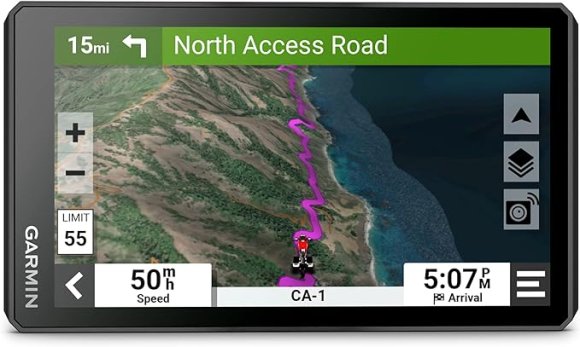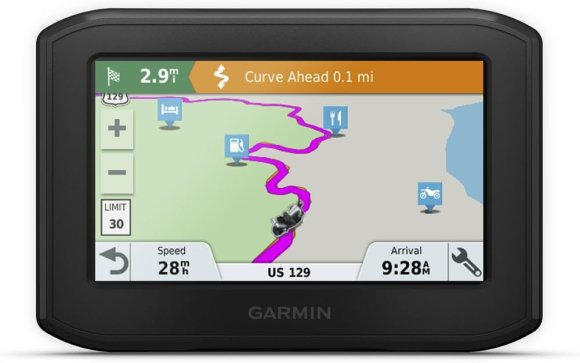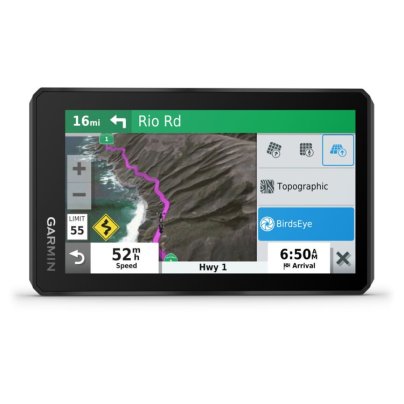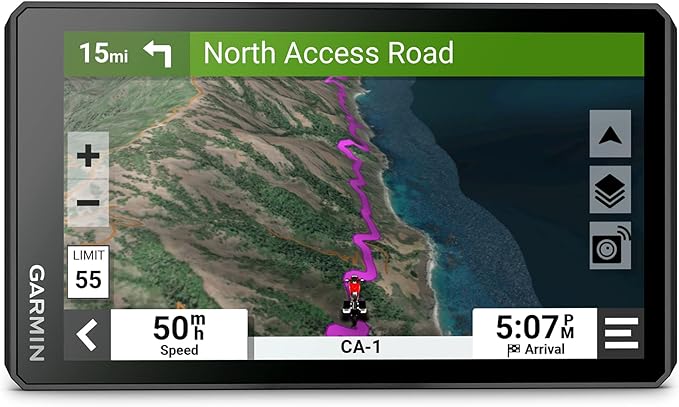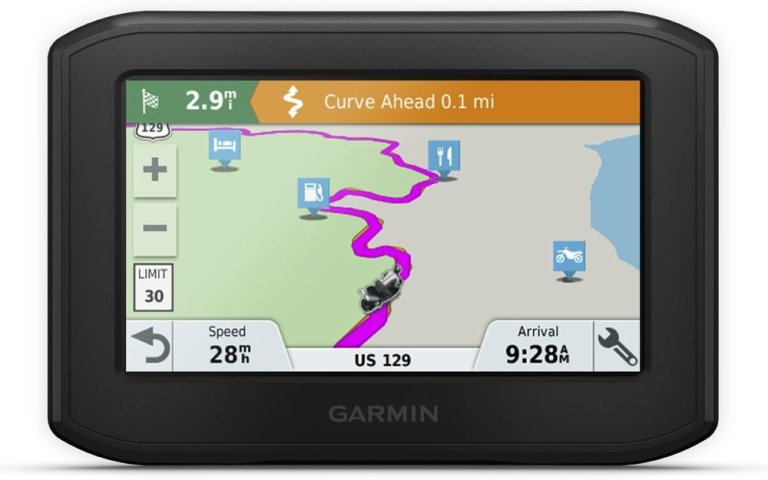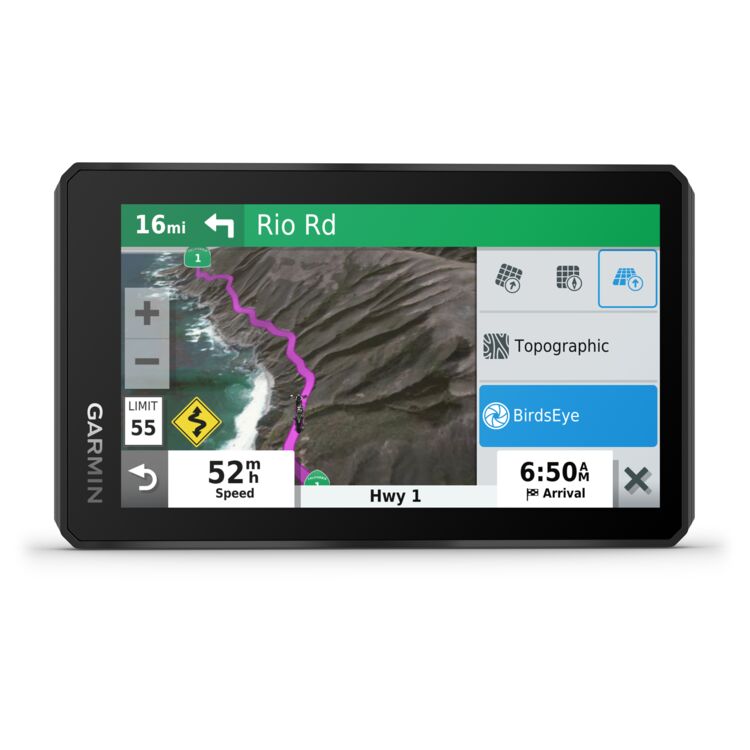We may earn revenue from the products available on this page and participate in affiliate programs. Learn more ›
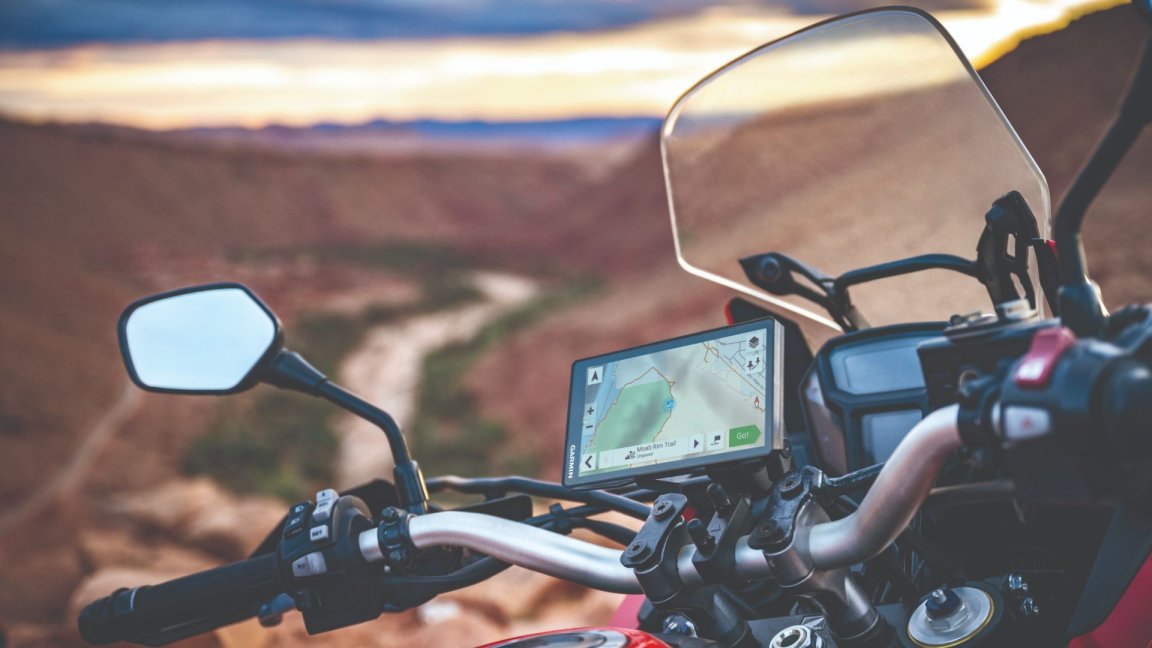
For many motorcyclists, a cell phone’s navigation system and a motorcycle mount will suffice in helping them get from A to B. But this won’t cover you in every situation. I’ve had to find shade when my phone overheated in the mountains and hide under trees during sudden downpours. If you’re the adventurous type, like me, you might need a motorcycle GPS unit.
Whether you’re tackling a fire road or riding so high the air is becoming thin, a motorcycle GPS will keep you informed of the path ahead. Most of these devices are built to take a beating, so you don’t have to worry about where your next adventure takes you. You’ll also find some models act as emergency locators and are small enough to fit in your jacket pocket.
Summary List
- Best Overall: Garmin Zumo XT2
- Best Value: Garmin Zumo 396 LTM-S
- Honorable Mention: Garmin Zumo XT
- Best Emergency GPS: Garmin inReach Mini 2
- Best Off-Road GPS: Garmin Montana 750i
Our Methodology
I wasn’t always for motorcycle GPS units, favoring my mobile phone instead. But during my nearly two decades of riding, I’ve experienced almost every way in which a mobile phone can let you down as a navigation unit. My phone has overheated in Baja California, run out of juice in the mountains, and been rendered unusable due to rain just 10 miles from my destination. The last issue I mentioned was when I started researching the ins and outs of motorcycle GPS units.
Although I haven’t had the chance to test every product on this list, my research, coupled with my institutional knowledge of the motorcycle industry, informs my choices. However, I reserve the right to change and update this buying guide as new products and technologies enter the market.
Best Motorcycle GPS: Reviews & Recommendations
Best Overall: Garmin Zumo XT2
Pros
- 6-inch ultra-bright HD touchscreen
- IPX7 rated
- Group Ride feature
- Pre-loaded North American maps
- Battery life up to six hours
Cons
- One of the priciest GPS units
The Garmin XT2 recently launched and builds on the success of its predecessor in almost every way. It features a 6-inch ultra-bright, glove-friendly HD screen, which gives you .5-inches more real estate. Handlebar vibrations and downpours won’t phase this model, thanks to its IPX7 rating. If you pair this unit to the Tread app, you can start a group ride and see the positions of other riders on the screen. There’s also a subscription-free feature that enables you to check out popular routes preferred by other riders.
It comes pre-loaded with on-road maps of North America, topographic maps, and satellite imagery. And you can choose the route that best suits your mood with Garmin’s Adventurous Routing feature. As you’d expect, there’s real-time traffic, weather, and smart notifications when you pair the XT2 with the Treat app. You can review the stats of every ride, including speed, acceleration, deceleration, and elevation. You can also pair this model with a compatible inReach satellite communicator (sold separately) and use two-way messaging, location sharing, and SOS features. It’s packed with features, so it should come as no surprise that it’s one of the most expensive GPS units on the market.
Best Value: Garmin Zumo 396 LTM-S
Pros
- Good value for money
- Customizable on-road routes
- Glove-friendly 4.3-inch screen
- Garmin’s Adventurous Routing feature
Cons
- Poor battery life
- Not IPX7 rated
The Garmin Zumo 396 LMT-S doesn’t have as many features as other units on this list, but it fulfills the fundamentals of a motorcycle GPS device for a relatively low price. It has a glove-friendly 4.3-inch screen that’s easily readable in sunlight and resistant to harsh weather conditions and fuel vapors. If you want to turn a boring trip into a fun one, you can use Garmin’s Adventurous Routing feature, which finds curvy roads and limits time spent on highways. Using an app and your smartphone, you can share live status updates and good routes you’ve discovered with friends and other riders.
The unit will alert you to hazards and driving laws, such as sharp curves ahead and changes in helmet laws as you cross state lines. This isn’t the option for riders who want to discover new off-road adventures, as the device doesn’t have any preloaded trails. Another thing to be aware of is this GPS unit doesn’t have a long battery life, but you can hardwire it to your bike.
Honorable Mention: Garmin Zumo XT
Pros
- 5.5-inch ultrabright HD touchscreen
- Preloaded off-road routes
- Customizable on-road routes
- Compatible with inReach satellite communicator
Cons
- Interface takes time to get used to
If you don’t need the very latest, you can save a few bucks and pick up the Garmin Zūmo XT. But don’t get it twisted, this model isn’t lacking in the technology department, far from it, there’s just a newer version available. The Zumo XT features a large 5.5-inch HD display that’s ultrabright, glove-friendly, and has an IPX7 rating. You can go anywhere with this GPS regardless of what the weather has in store, and it passed the MIL-STD-810F drop test, so it’s as durable as they come. This model comes with preloaded North American maps, and you can choose to view your route in street maps, topographic maps, or BirdsEye Satellite with a single tap.
It features Garmin’s tried and tested Adventurous Routing mode, which enables you to choose the path you find most entertaining or economical to get from A to B. And if you find a route you like, you can use the track recorder to save your best rides. This model will prepare you for the unexpected, as it alerts you to railroad crossings and sharp turns. When fully charged, the battery lasts for 3.5 hours at 100 percent brightness and up to six hours on lower settings. Should you decide to hardwire it to your bike, you won’t have to worry about it running out of juice. The downside of this GPS is that its user interface takes some time to get used to.
Best Emergency GPS: Garmin inReach Mini 2
Pros
- Emergency SOS beacon
- GPS and Iridium network
- Uses GALILEO, QZSS, and Beidou satellites
- Up to 30-day battery life
Cons
- Small display
- Subscription required
- Doesn’t show directions like a conventional GPS
The Garmin inReach Mini 2 serves more as an emergency SOS beacon than a conventional GPS unit. This device works with an Iridium network to provide 100 percent global satellite coverage and features two-way messaging and a two-way global SOS feature (active satellite subscription required). As well as GPS, the inReach Mini 2 also uses GALILEO, QZSS, and Beidou satellites for tracking. It uses the same battery as its predecessor, but thanks to an improved processor, it lasts for up to 30 days when tracking your position every 30 minutes. The Mini 2 now features a USB-C port and charges much faster when compared to the previous model.
Here’s what managing editor Jonathon Klein has to say about the inReach Mini 2. “Garmin’s inReach Mini 2 is something I don’t leave home without. Not because I’m in any danger, but because when I do leave home, it’s usually for the backcountry and there’s no cell service out there. It’s given me and my wife such peace of mind with its ability to navigate the woods, send messages, and hit an SOS if needed. I, honestly, don’t know why I didn’t get one sooner. And Garmin’s smartphone app makes it that much better, as the two devices work in tandem to provide exceptional versatility. Get one if you do a lot of backcountry riding.
Best Off-Road GPS: Garmin Montana 750i
Pros
- Pre-loaded topographical U.S. and Canadian maps
- City Navigator street mapping
- Global Iridium Satellite network
- 8 megapixel camera and geotagging
- Good battery life
Cons
- Subscription required for satellite network
- Expensive
- Not a motorcycle-specific design
The Garmin inReach Mini 2 serves more as an emergency SOS beacon than a conventional GPS unit. This device works with an Iridium network to provide 100 percent global satellite coverage and features two-way messaging and a two-way global SOS feature (active satellite subscription required). As well as GPS, the inReach Mini 2 also uses GALILEO, QZSS, and Beidou satellites for tracking. It uses the same battery as its predecessor, but thanks to an improved processor, it lasts for up to 30 days when tracking your position every 30 minutes. The Mini 2 now features a USB-C port and charges much faster when compared to the previous model.
Here’s what managing editor Jonathon Klein has to say about the inReach Mini 2. “Garmin’s inReach Mini 2 is something I don’t leave home without. Not because I’m in any danger, but because when I do leave home, it’s usually for the backcountry and there’s no cell service out there. It’s given me and my wife such peace of mind with its ability to navigate the woods, send messages, and hit an SOS if needed. I, honestly, don’t know why I didn’t get one sooner. And Garmin’s smartphone app makes it that much better, as the two devices work in tandem to provide exceptional versatility. Get one if you do a lot of backcountry riding.
Our Verdict on the Best Motorcycle GPS Units
The Garmin Zumo XT2 passes all the durability tests you could hope for, has a fantastic screen, and offers motorcycle-specific routes, so you’ll be covered wherever your next adventure takes you. If you’re on a tight budget, then check out the Garmin Zumo 396 LMT-S, which is well-suited to motorcyclists who only intend to ride on asphalt.
What to Consider When a Buying Motorcycle GPS
Here’s everything you need to consider when buying a motorcycle GPS.
Screen
Most motorcycle GPS units have glove-friendly touchscreens, meaning you can change settings on the move, but some work better than others. Look out for models that have a sensitivity control feature, which allows you to make the screen’s sensitivity better suited to thick or thin gloves. Bigger isn’t always better, but when it comes to using a GPS on the move with thick gloves, it certainly helps to have a large screen. Lastly, you’ll want to make sure you get a screen that’s bright and clear enough to be seen in direct sunlight.
Durability
Since your GPS needs to endure whatever your bike does, it needs to be durable. Look for models that have an IPX7 water rating, so you won’t need to worry about them if the heavens open up. Another rating to look out for is the MIL-STD 810, which is the military standard test for thermal, shock, water, and vibration resistance. The MIL-STD 810 rating is essentially a must for anyone who intends on using their GPS off-road.
Preloaded Maps and Moto-Specific Routes
Most GPS units on the market come with preloaded road maps for the United States, Canada, and sometimes Mexico. If you’re planning on going further afield, you might need to download extra maps. Some units will come with preloaded off-road trails and give you a bird’s-eye view of the topography, making them better suited for adventure riders. A good motorcycle-specific GPS will let you enter your preferences in terms of routes, meaning you can skip the highways and hit all the twisties or have a healthy dose of both.
Safety Features
Some GPS units double as safety beacons, sending live updates to your friends while you’re on the move. If you regularly ride in areas where you don’t get any cell reception, one of these devices could be a lifesaver. Normally, these units work via a satellite and require a subscription to use all their features. Many models will also warn you when you’re approaching hazards like a sharp turn or railroad crossing. Some units also give you live weather and traffic updates.
Pricing
For between $300 to $500, you’ll find models that’ll allow you to customize your trip, meaning you can ride the types of roads and trails you want.
FAQs
You’ve got questions. The Drive has answers.
A: Both car and motorcycle GPS units use Earth-orbiting global positioning satellites to transmit your location and route. The satellites share data to pinpoint your position.
A: Yes, but there are some caveats. Unless your smartphone is weatherproof and has a 100 percent waterproof case, it could get damaged by the elements. Also, if it falls at a high speed, it’ll cost you. You need a signal from a cell tower for your phone’s navigation system to work, which is the main advantage GPS units have over mounted smartphones.
A: That’s up to you. If you connect your GPS unit directly to your bike’s power source, then it’ll stay charged while you ride. But if you don’t hardwire it, it won’t charge.
